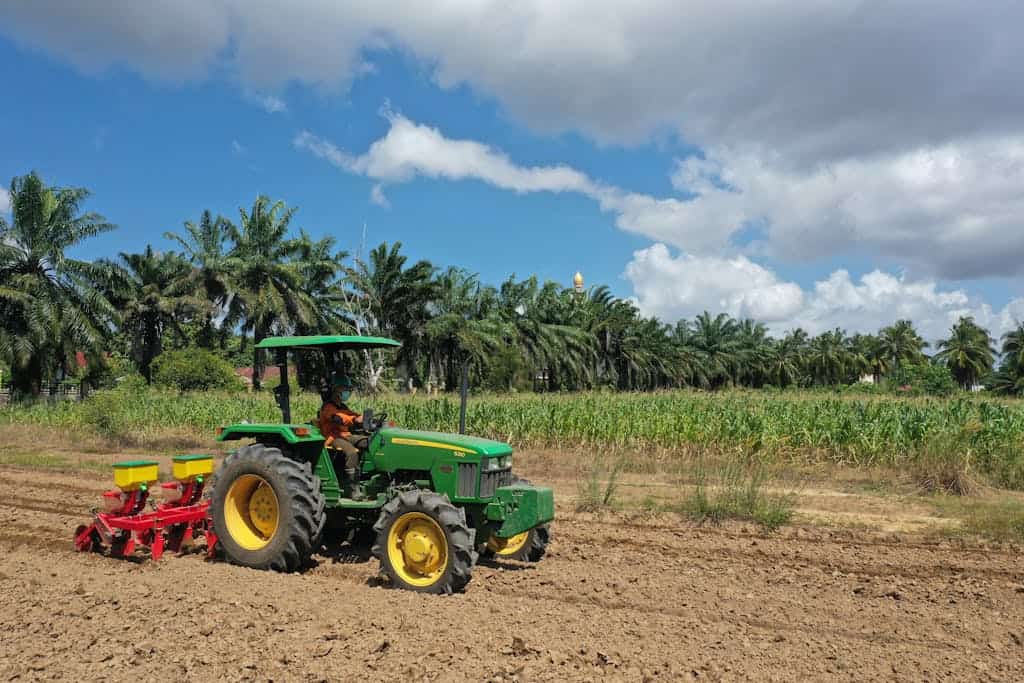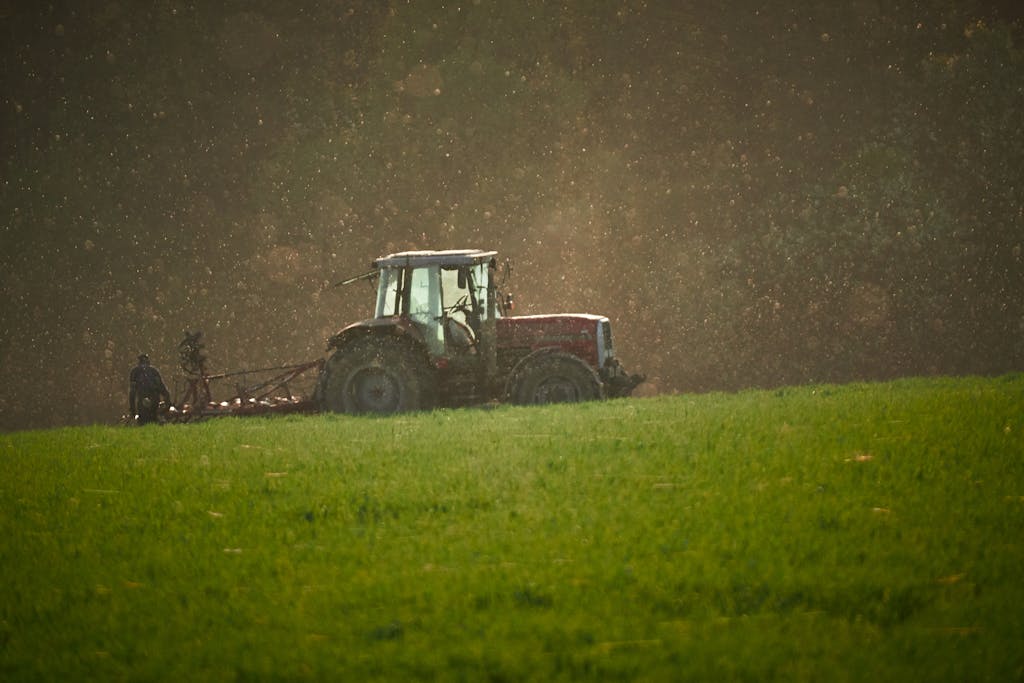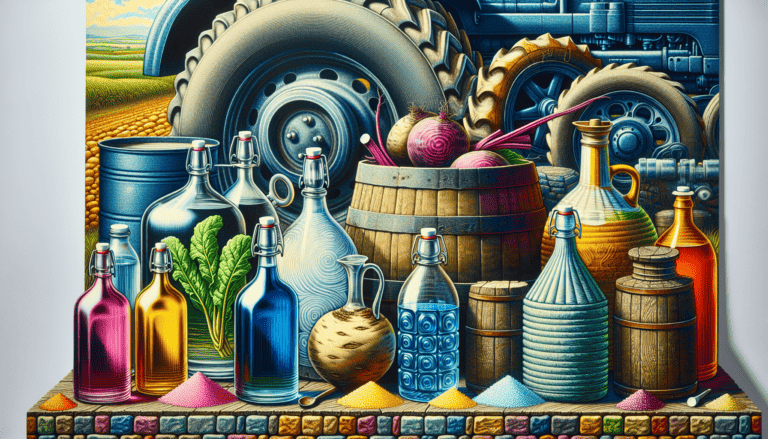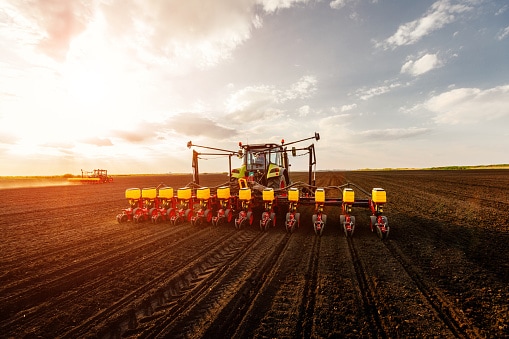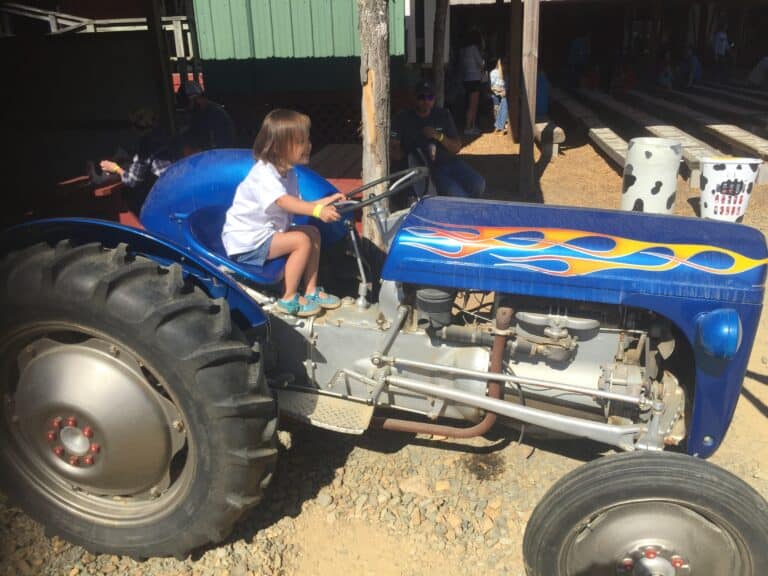Top Advancements in Tractor Technology Transforming Agriculture
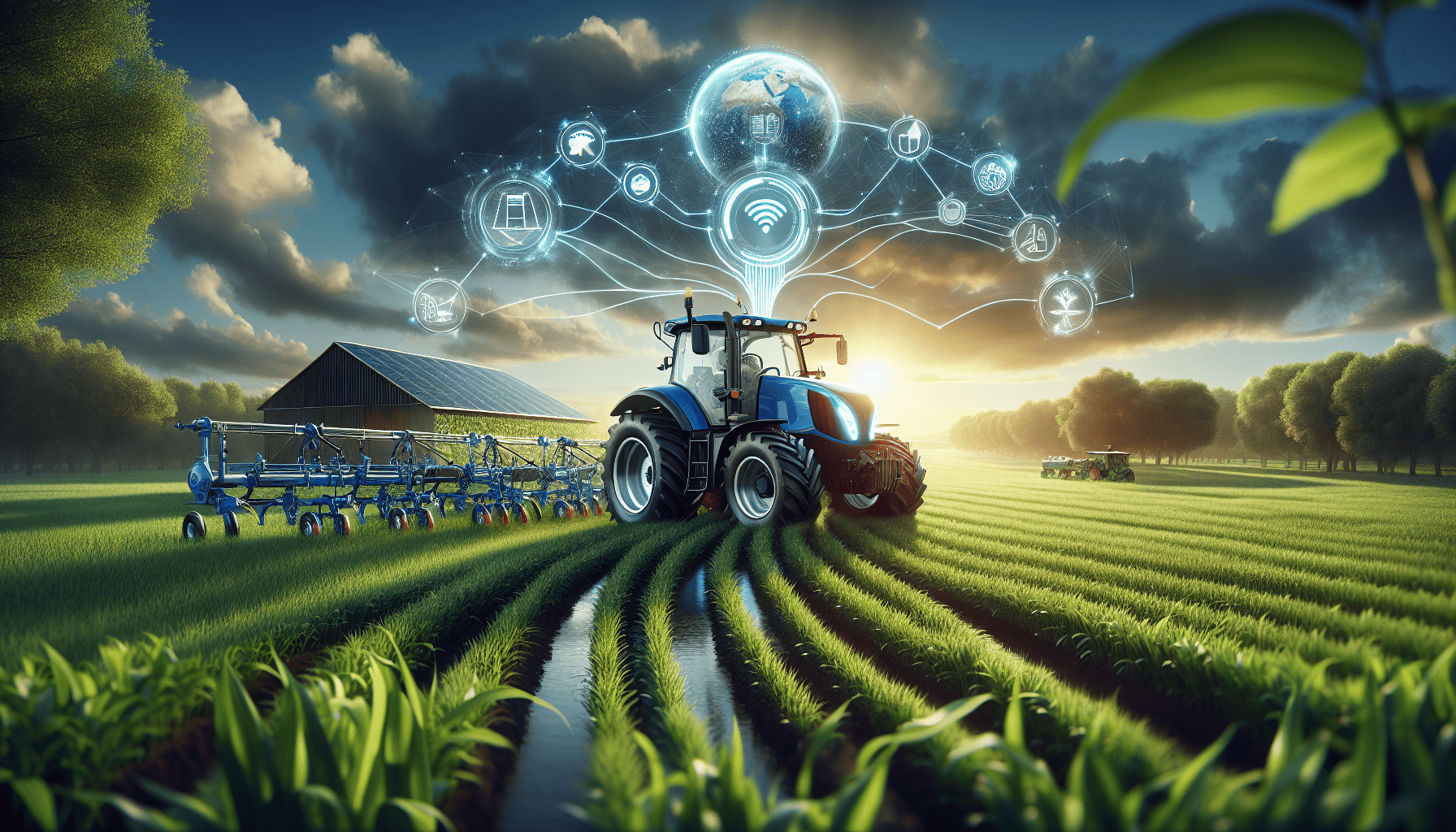
Are you keeping pace with the rapid advancements in tractor technology that promise greater productivity and environmental stewardship? No matter what type of tractor you have, this article offers an insightful look into how AI, autonomous features, and electrification are driving the agricultural sector forward. Get ready to explore the potent combination of innovation and practicality that is setting the new standard in farming efficiency.
Key Takeaways
Tractor technology advancements are enhancing efficiency and sustainability, featuring AI integration, autonomous capabilities, precision agriculture, electrification, and retrofit options for older models.
Tractor apps like TractorPal and JDLink are revolutionizing farm management, offering digital assistance for maintenance tracking, inventory management, and fleet monitoring, facilitating a shift towards smart and efficient farming.
Safety innovations, inventory and fleet management tools, and the economic and environmental benefits of electric tractors are driving the agricultural industry towards sustainable and cost-effective practices.
Exploring the Latest Tractor Tech Innovations
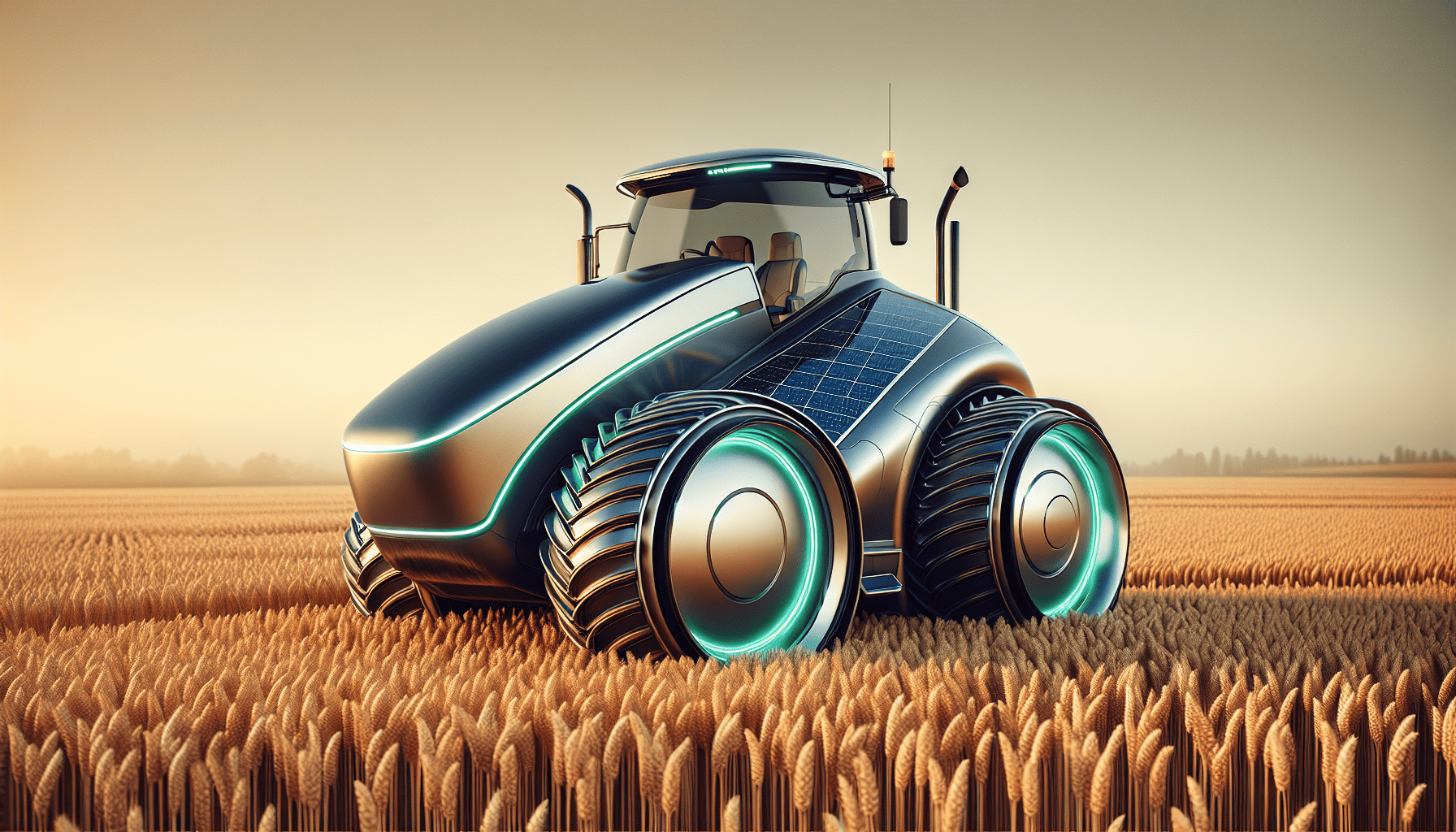
As we advance toward a sustainable future, tractors are being transformed into more intelligent and responsive pieces of equipment. The adoption of artificial intelligence (AI) in agriculture is changing the game by providing real-time monitoring and the ability to make immediate adjustments for enhanced performance. For those concerned about their older tractor models, retrofit technology offers a solution that upgrades these tried-and-true machines with up-to-date features, increasing efficiency without necessitating the purchase of costly new machinery.
The narrative doesn’t end at increased performance and efficiency. Sustainability remains at the forefront of these technological advancements. Newly designed tractors prioritize environmental considerations, integrating innovations intended to minimize farming operations’ carbon footprint. Examination will reveal cutting-edge developments like precision agricultural tools, self-operating capabilities, and moves towards electrification—all underscoring an ongoing commitment to eco-friendly practices within the sector.
Precision Agriculture Tools
Precision agriculture is centered around enhancing precision and control within farming practices. The integration of advanced technologies in tractors, including GPS systems and sensor-equipped machinery, has facilitated this by enabling precise autonomous operations for various agricultural tasks like seeding, fertilization, and irrigation. This technology encompasses elements such as receivers, radios, displays, and software that provide varying levels of accuracy. For instance, an SF1 signal can achieve a pass-to-pass precision up to six inches within a quarter-hour.
A wide array of GPS system options exists for guidance in the agricultural sector.
Systems operated via tablets
Applications that feature lightbars along with capabilities to record field boundaries
Guidance systems capable of navigating curved lines
Yield maps designed to pinpoint yield disparities across fields which assist in creating tailored variable rate application strategies for inputs.
Such technological advancements are crucial components underpinning the success of precision agriculture methods.
Autonomous Tractor Capabilities
The trajectory of agriculture is being reshaped by autonomous innovation. Leading producers of agricultural machinery and emerging startups are centering their efforts on crafting robotic field machines and systems to automate the tasks in the field. The central components propelling these innovations forward are artificial intelligence (AI) and machine learning, which significantly improve both safety aspects and functional capacity for independent farming robots. These self-reliant tractors possess the ability to record work trajectories for uninterrupted agricultural activities, with remote management facilities enabling operations 24/7 during critical periods necessary for successful farming.
Despite this technological advancement, there’s still a vital need for human involvement when it comes to intricate decision-making processes that arise from ever-changing crop management conditions.
Electrification of Tractors
Consider the evolution of agriculture. It’s shifting towards an electrified horizon! Tractors powered by electricity, also known as EV tractors, utilize electric energy instead of diesel or conventional gasoline to carry out a variety of farming duties with assorted attachments. These machines deliver several advantages: they emit no harmful exhaust fumes, necessitate fewer maintenance activities related to their engines, operate more quietly, and introduce a heightened efficiency that diminishes running costs. Globally, government policies are facilitating this move towards tractor electrification through financial support incentives for adoption, development of substantial charging infrastructures and promotional campaigns aimed at raising public awareness.
In terms of power and performance capabilities, select models of these EV tractors can sustain operation for up to 14 hours on just one charge cycle while requiring merely six hours to recharge completely.
Navigating the Digital Farm with Tractor Apps
The digital revolution has even reached the agricultural sector. Applications designed for tractors have transformed the way in which farmers track and manage both maintenance schedules and equipment inventories, elevating these processes to an unprecedented level of efficiency and ease. An example is TractorPal, an app that works on both iPhone and Android platforms, allowing farmers to:
Keep tabs on maintenance needs as well as inventory levels
Record information for all types of farm vehicles including cars, trucks, tractors, and other machinery
Store critical details such as serial numbers along with purchase prices and model years
JDLink is another advanced tractor application offering extensive support remotely from dealers. It equips users with capabilities like:
Fleet monitoring to boost overall operational productivity
Comparison of different pieces of equipment’s performance within their fleet
Generation of in-depth reports
Streamlined organization for machine service requirements
These applications go beyond simple technological aids. They embody a new tier level toolset acting much like an electronic assistant or a dependable bucket always at hand ready to assist modern-day growers.
TractorPal: The Digital Maintenance Notebook
Consider TractorPal your electronic log for maintenance management. It enables agricultural professionals to:
Set up tailored or standardized maintenance schedules and logs, ensuring thorough documentation of upkeep and repair work.
Get alerts when it’s time to perform scheduled tasks.
Manage equipment that isn’t equipped with telematics.
The app’s inventory capability allows for the recording of specifics such as:
The serial number
Year of manufacture
Details regarding the acquisition
Initial mileage
TractorPal enhances protection by offering data access restricted to individual devices, synchronization options through the cloud specifically for Android users, along with the capacity to create neatly organized reports pertaining to both maintenance activities and inventory records which can be distributed among stakeholders.
Offering a free trial coupled with unlimited storage space for data entries, TractorPal presents an all-inclusive toolset designed for today’s agriculturists.
JDLink: Connecting John Deere Equipment
The eagerly awaited JDLink app is a game-changer for John Deere aficionados. It comes loaded with an array of features that allow remote dealer assistance, such as proactive monitoring of machinery, strategic management of fleets to improve operational efficiency, benchmarking the performance across different machines in the fleet, and generating comprehensive reports designed to maximize the use of these assets.
With JDLink at their fingertips, operators are now equipped with advanced tools to elevate their machine and fleet management practices.
This innovative application facilitates effective maintenance management for equipment by providing clear insights into when maintenance is due while simplifying the process of ordering parts directly through John Deere Parts.
Enhancing Tractor Performance with Attachments
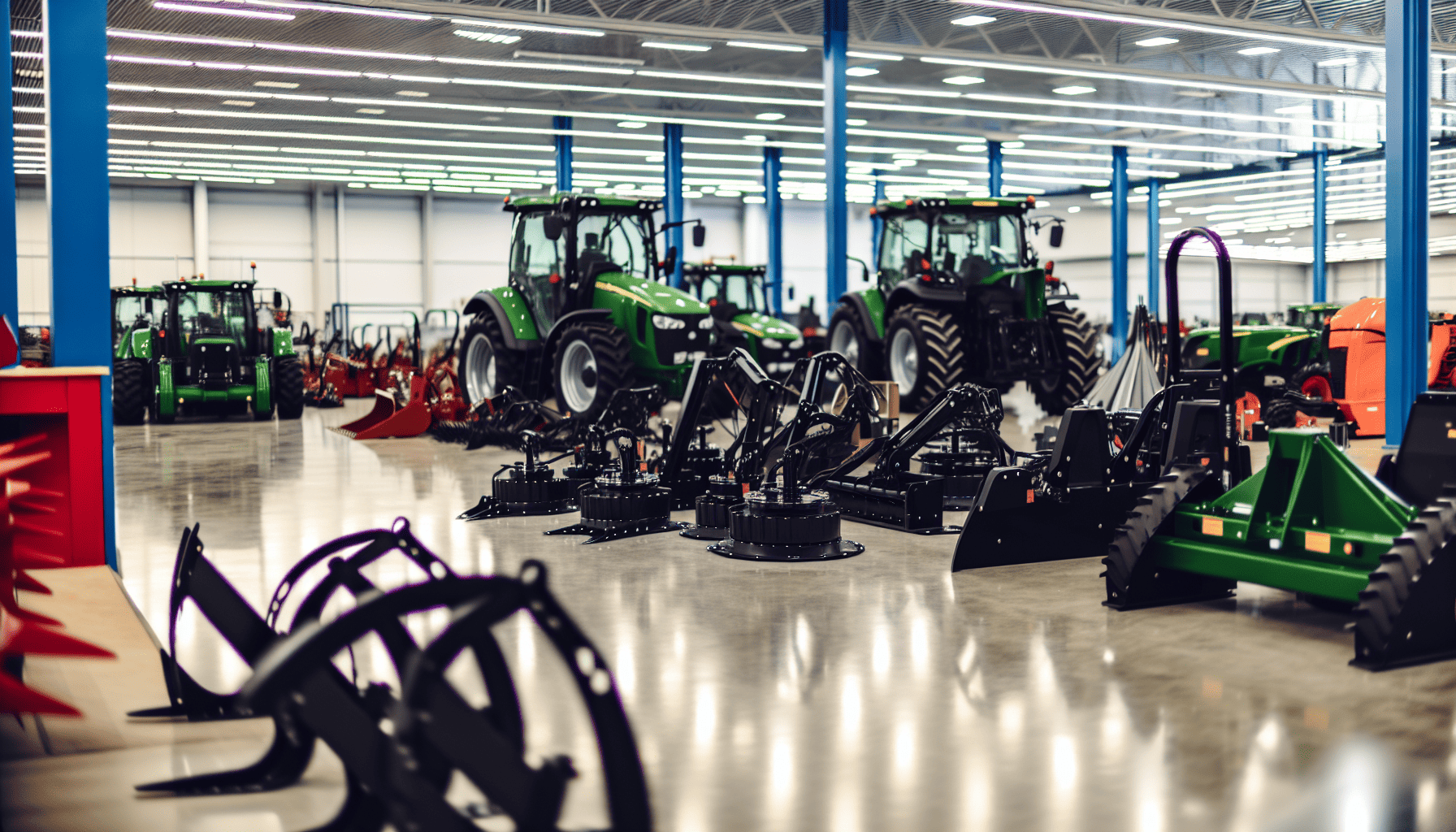
In the same way a carpenter relies on an array of tools to complete their work, those who operate farms require diverse attachments to enhance the functionality and efficiency of their tractors. When choosing these vital accessories, it’s essential to ensure they align with both the size and capabilities of your tractor—avoiding ineffective operation or damage from incompatible pairings.
Attachments for a tractor must correspond with its horsepower range in order to perform correctly. Attachments are crafted for various horsepower classifications. For anyone experienced in farm operations, familiarity with three-point hitch attachments is likely. This common system enables efficient linking between implements and tractors, especially within Category 2. One hitch designed for machines under fifty-five horsepower.
Yet beyond pure utility, aesthetics can also be pivotal when farmers select equipment—they often prefer that additional tools not only fit but also visually complement the color scheme of their existing machinery.
Choosing the Right Attachment
Selecting the appropriate tractor attachment requires more than just opting for one that seems to be the most efficient. It involves assessing the particular jobs you intend to use it for, like grass cutting, clearing snow or dedicated tasks requiring specialized tools. Ensuring an optimal match and functionality of these attachments demands that both their width aligns with your tractor’s rear wheel spacing as well as fitting properly with front-end loader arms.
Attachments available for tractors are typically sorted according to horsepower ranges they’re suited for. This means there are lighter-duty options suitable for smaller tractors and heavier-duty models designed for larger ones boasting greater power. If you want quicker transitions between different three-point hitch attachments, ensuring they are compatible with quick-hitch systems can dramatically streamline swapping processes and enhance overall work efficiency.
Quick Hitch Systems
Quick hitch mechanisms have revolutionized farming practices by enabling the swift exchange of various rear-mounted implements, thereby enhancing operational efficiency and simplifying task transitions. Such systems that align with universal classifications—for instance, Category One Quick-Hitches—or those unique to certain brands such as John Deere’s iMatch, are known for shaving hours off labor-intensive activities, making them a value-boosting asset on farms.
Taking Pat’s Easy Change System as an illustration:
It features adjustable options catering to different widths of equipment which promotes its use across multiple tools without the need for adaptors or alterations.
For added steadiness during hookup procedures there is an optional stabilizer bar tailored for setups like Pat’s Quick Hitch.
Its durable construction has been designed to extend only minimally from the tractor’s lifting arms, thus ensuring compactness in storage and maintaining agility while maneuvering.
Smart Farming: Integrating Tractor Tech with Farm Systems

In today’s advanced agricultural landscape, the synergy between tractor technology and farm management systems is pivotal for productive and streamlined farming operations. JDLink plays an essential role in unifying various pieces of equipment within the John Deere Operations Center—this encompasses even non-John Deere machinery through the use of compatible modems and interfaces. This holistic integration paves the way for automated machinery to integrate effortlessly into extensive agricultural management practices, delivering a rich data stream that enhances analytics and research & development efforts.
Smart tractors funnel critical data into these farm management platforms to refine decision-making processes, thereby boosting operational efficiency and overall farm yield. Analyzing this wealth of big data from sophisticated tractors can inform improvements in agronomic procedures, optimizing crucial activities such as planting schedules and harvesting times.
Data-Driven Agriculture
In the realm of agriculture, being driven by data is not just a trendy notion from the tech world. It’s revolutionizing farming practices. Smart tractors are at the forefront, gathering extensive datasets that can be utilized instantly to guide critical agricultural decisions such as when best to plant or harvest crops and how to monitor crop health effectively. These tractors come equipped with sensors adept at measuring vital environmental factors like soil moisture content and temperature, wind directionality and speed, along with atmospheric conditions including humidity levels—these metrics all feed into an informed decision-making framework for farm management.
The process of analyzing this abundance of data collected by tractors is fundamental in fine-tuning various aspects of farming operations. This includes selecting appropriate seed varieties and crafting tailored irrigation plans. The seamless integration offered by John Deere’s JDLink technology means that this precious data streamlines directly into the John Deere Operations Center without interruption. Consequently, there exists an up-to-the-minute capability to track both machine performance efficiency and crucial agronomic information.
Upgrade Options for Older Machinery
Not every farm may have the most current machinery at their disposal, yet they can still take advantage of contemporary technological advancements. Insights rooted in data can help agriculturalists decide if it’s more strategic to improve their present machinery or invest in new apparatuses. Information gleaned from sources like USDA publications and EPA resources is instrumental for farmers as they evaluate potential improvements for their tractors, ensuring that any enhancements are grounded in a solid understanding of the probable gains and increased efficiencies.
Proper oversight of farm equipment, underpinned by trustworthy data, is crucial to boosting the performance levels of aging tractors without necessarily acquiring brand-new pieces of equipment.
Safety First: Innovations in Tractor Safety Features
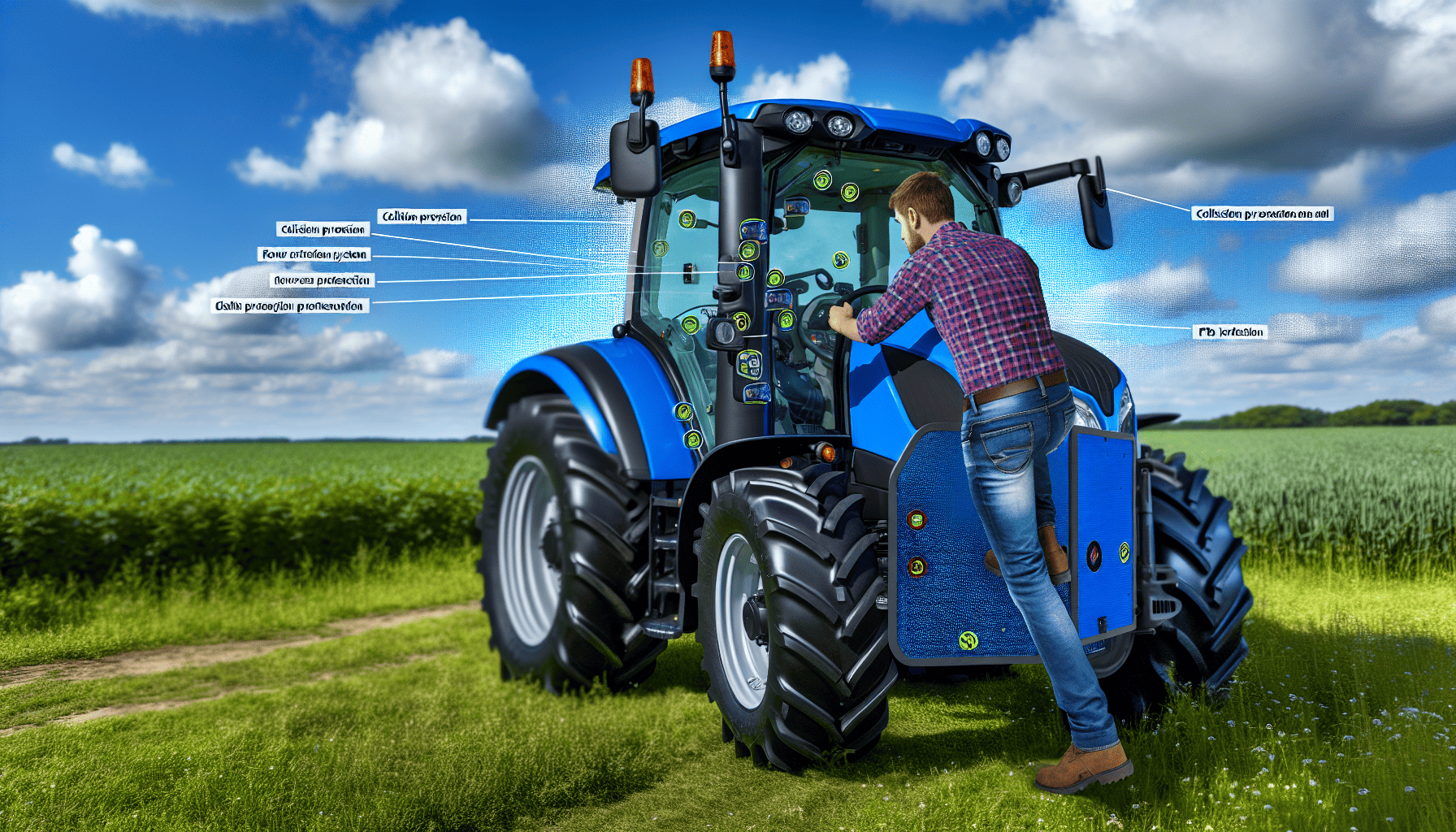
Ensuring safety is paramount when operating tractors. Modern advancements have led to significant improvements in tractor technology, focusing on protecting the health and safety of farm operators as well as others on site. For example, the Monarch Tractor has integrated cutting-edge safety elements such as safeguards against collisions, systems for detecting humans nearby, and mechanisms that secure power take-off (PTO) operations—reflecting major strides forward in terms of safe tractor use.
To improve stability—and consequently enhance operator protection—technological innovations like Smart 4-wheel Drive and Hill Hold features have been implemented in tractors. These developments are crucial for minimizing the risks associated with rollovers. Safety measures are not just supplemental options. They are integral components of current tractor design that simultaneously elevate operational efficiency while ensuring the welfare of those who handle them.
Collision Prevention Systems
Autonomous farming systems bring a wealth of advantages, but they also introduce safety concerns that must be tackled. Essential to increasing safety in the realm of autonomous agriculture are advanced technologies like virtual barriers and reliable systems for identifying dangerous circumstances.
Apps such as MyMiX play a crucial role by reinforcing safe driving practices on the farm through improved oversight of drivers. These initiatives demonstrate that automation and safety can effectively work hand in glove.
PTO Safety Enhancements
Ensuring the safety of Power Take-Off (PTO) mechanisms is a crucial element of overall tractor operation security. Shields designed for PTO drivelines are implemented to safeguard the shaft, using materials such as metal or plastic and integrating bell-shaped ends to encompass universal joints, thereby mitigating hazards related to entanglement. Master shields provide an extra degree of safety by concealing the tractor’s PTO stub on three sides while also covering over the drive shaft’s front joint upon connection.
To maintain a high level of protection against accidents and injuries—and thus promote a more secure working atmosphere—it is essential that regular inspections be carried out to verify that both driveline and master shields remain securely fastened and intact. Should there be any damage detected on these protective devices, prompt replacement is imperative.
Keeping Track: Inventory and Fleet Management Solutions
In the agricultural sector, every piece of machinery is a substantial investment. Consequently, contemporary farms depend greatly on advanced tools for managing inventory and fleets to vigilantly oversee and enhance their assets in machinery. Software designed for tracking inventory assists agriculturalists in administering components and equipment, keeping logs of services performed, and anticipating future maintenance demands to prevent expensive periods of inactivity.
The capabilities of fleet management solutions encompass:
Accurate monitoring of each tractor’s precise position, working condition, and servicing needs
Aid in orchestrating schedules for tasks across farmlands
Delivery of an all-encompassing view into the extent of a farmer’s holdings
By employing these technologies farmers can significantly boost productivity as well as operational efficiency within their fields.
Inventory Tracking Software
Imagine effortlessly accessing all the specific information about your farm machinery with a simple tap. This convenience is what an inventory management system brings to the table, helping you monitor and catalog necessary parts and supplies for your agricultural equipment so that when it’s time to order or swap out components, everything is organized for swift retrieval.
Platforms such as Fleetio provide comprehensive maintenance and management services tailored specifically for farm apparatus, including optimizing maintenance procedures, keeping track of expenses, and diminishing safety hazards to minimize operational delays. Systems like MiX Telematics furnish farmers with custom-designed asset and fleet administration tools dedicated to agriculture needs—promising efficient oversight of vehicles and machinery via one unified platform.
Fleet Management Platforms
Fleet management platforms, such as Fleetio and MiX Telematics, present a centralized system to oversee agricultural fleets by amalgamating crucial data that can be reached from any location. These solutions furnish real-time insights into the use of farm vehicles and machinery through telemetry technologies. They enhance production, reduce environmental footprint, and refine asset management by employing GPS tracking, vehicle telematics systems, and monitoring of machine operators.
These software platforms are essential tools for contemporary agriculture. They ensure field operations are carried out with maximum efficiency by optimizing the use of tractors. This streamlines workflows on the farm significantly.
Cost-Efficiency and Environmental Impact
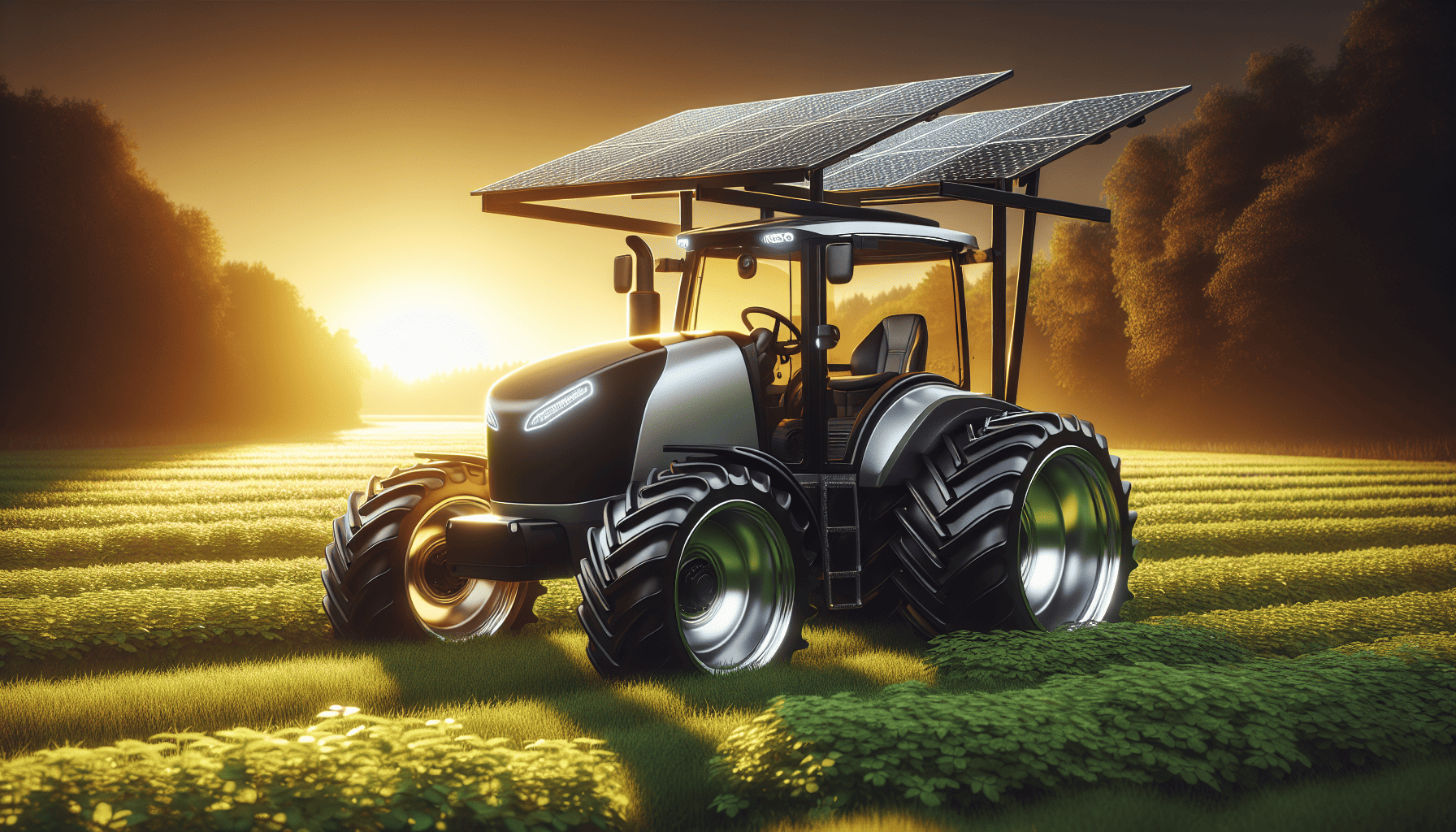
In the realm of agriculture, every cent is critical. Shifting to electric tractors affords farmers economic benefits in the long term, making it a smart financial choice. It’s interesting to note that by using a Monarch electric tractor, there can be an annual saving up to $18,000 with a substantial reduction in diesel use—around 2,100 gallons per tractor.
Beyond just monetary gains though. Factoring efficiency enhancements through autonomous systems into tractors also plays a role in cost-effectiveness. This includes weighing the increased productivity against expenses associated with additional sensors and control systems. These advanced tractors offer more than mere savings—they are beneficial for the environment too, playing an influential role in diminishing farming’s carbon footprint.
Long-Term Savings with EV Tractors
Utilizing electric tractors can lead to substantially reduced running expenses, as the cost of electricity Undercuts that of diesel fuel. Electric vehicles (EVs) benefit from electricity’s relatively stable pricing. With the fluctuating costs of diesel, offering a more consistent and potentially cheaper operational expenditure for EV tractors. This shift away from reliance on diesel translates into heightened profitability for farms, notably those cultivating fruits and vegetables.
In one particular instance involving high density apple orchard work with an MK-V electric tractor during field tests, it was found that over 1,000 hours there were savings amounting to $7,828.58 annually when compared against traditional diesel-powered machinery. The simplicity of their design means fewer components are prone to wear and tear. Hence maintenance demands and repair bills for these electrically powered workhorses are expectedly less than those incurred by their fossil-fueled counterparts—another aspect driving down long-term operational costs.
Reducing Carbon Footprint
Tractors powered by electricity not only excel in cost efficiency, but also provide numerous ecological advantages for agricultural practices, such as:
No direct emissions during operation
A diminished carbon footprint when utilizing renewable energy sources for charging
Support for international ambitions to achieve carbon neutrality within the realm of agriculture
By opting for electric tractors, those in the farming sector can significantly reduce their environmental impact and progress towards an eco-friendly future.
Noted particularly for converting a larger proportion of battery power into effective labor output, electric tractors demonstrate superior energy efficiency. This minimizes waste and reduces the agricultural carbon footprint. The introduction of these vehicles could result in decreased reliance on herbicides and enhance soil health—furthering sustainable farm management practices while advancing efforts to reduce carbon emissions.
Summary
In concluding our exploration of the evolution in tractor technology, it is evident that tractors have significantly progressed. They now boast capabilities ranging from precision agriculture enhancements to autonomy and electrification, as well as integrating applications for smart farming — all signaling a new era in agricultural practices. Modern tractors are transforming the sector by improving performance through suitable attachments, advancing safety with cutting-edge features, adeptly handling inventory and fleet operations while fostering cost-efficiency and minimizing environmental footprints. Anticipating Innovations brings excitement when considering what lies ahead for this indispensable equipment and its role in supporting farmers’ livelihoods.
Frequently Asked Questions
What is the history of tractor technology?
Since their inception in the 19th century as steam-powered machines, tractors have undergone significant technological advancements. The early 1900s marked a pivotal transition to gasoline and kerosene engines, ushering in an era often referred to as the Golden Age of Tractors during the 1920s through the 1940s—highlighted by prominent models from Fordson and John Deere. Following this period, there was a notable shift towards tractors powered by diesel engines.
What is the future of tractors?
The future of tractors includes the possibility of autonomous vehicles in farm fields by 2030, as companies like John Deere intend to have them on the market and in operation by then. Additionally, the roles of tractors may diminish as spray and seed drones take over some of their functions, with the potential for quieter and more efficient operations.
What is the fastest growing tractor company?
Mahindra, the fastest expanding tractor manufacturer, also ranks as the third top-selling and most popular tractor brand in the United States.
How does a modern tractor work?
Utilizing a power takeoff (PTO), a contemporary tractor transfers the engine’s generated power to implements or machinery, which is facilitated by a rotating shaft situated at the rear of the vehicle. It is equipped with an array of systems such as an engine, transmission, cooling mechanism, fuel and electrical setups. Alongside this are an operator’s station for control and wheels for mobility.
What is precision farming system?
Using information technology, precision agriculture, or farming with precision, ensures that the optimal amount of resources are delivered to both crops and soil for their best health and productivity. This approach results in higher crop yields while efficiently managing resources.

